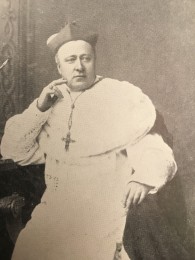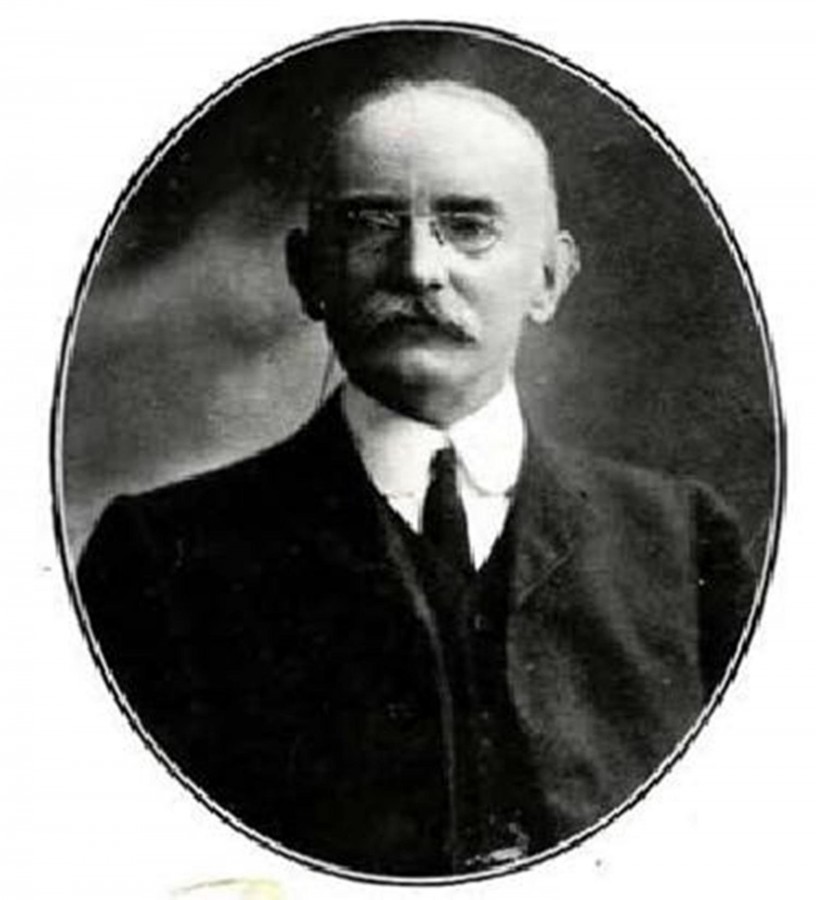On Saturday, 25 June 2016, 12noon, Cllr Kieran McCarthy, in association with the Friends of St Finbarr’s Hospital, will give a public historical walking tour of the hospital grounds (meet at gate). The walk is free and takes place to support the summer bazaar of the Friends. Cllr McCarthy noted: “St Finbarr’s Hospital, the city’s former nineteenth century workhouse, serves as a vast repository of narratives, memories, symbolism, iconography and cultural debate, this year the site is 175 years old”. When the Irish Poor Relief Act was passed on 31 July 1838, the assistant Poor Law commissioner, William J Voules came to Cork in September 1838 to implement the new laws. Meetings were held in towns throughout the country. By 1845, 123 workhouses had been built, formed into a series of districts or Poor Law Unions, each Poor Law Union containing at least one workhouse. The cost of poor relief was met by the payment of rates by owners of land and property in that district.
In 1841 over eight acres, were leased to the Poor Law Guardians from Daniel B. Foley, Evergreen House, Cork. Mr. Foley retained an acre, on which was Evergreen House with its surrounding gardens, which fronted South Douglas Road (now a vacant concrete space). The subsequent workhouse that was built on the leased lands was opened in December 1841. It was an isolated place, built beyond the City’s toll house and toll gates. The Douglas Road workhouse was also one of the first of over 130 workhouses to be designed by the Poor Law Commissioners’ architect George Wilkinson.

Kieran’s Our City, Our Town Article,
Cork Independent, 23 June 2016
Remembering 1916, Death of a Bishop
In continuing to present a broad profile of life in Cork in 1916, this week one hundred years ago, the city and region lamented the death of the Bishop of Cork Thomas Alphonsus O’Callaghan (1839-1916). He passed away on 14 June and the newspapers for days after were filled with information spreads of his life, work and funeral. His role in supressing the 1916 rising contribution in Cork was limited as he was ill at the time and he sent his Assistant Bishop Cohalan to the Volunteer Hall on Sheares Street. However he is still a gentleman worth recalling. He set up the industrial school model and also funded some very beautiful churches in the late nineteenth and early twentieth centuries.
Born in the South Parish, Cork, in 1839, at the age of eighteen years, Bishop Thomas O’Callaghan entered the Novitiate of the Dominicans at Tallaght, and elevated to the priesthood in 1864. He spent six years after that teaching in the convent at Tallaght, and then returned to Cork. Before his appointment as Prior of San Clemente he was in the house of the Order at Claddagh, Galway, and St Catherine’s, Newry He returned to his native city to the exalted office of Co-adjutor-Bishop to Bishop William Delaney in 1884.
Both Bishops Delaney and O’Callaghan were advocates of educational reform. They determined that Cork would be the location of a model industrial school run by a Catholic order, and they saw it as an important step in overcoming the years of discrimination against Catholics by the governments of those years. It was this ambition that drove them to turn the newly founded St Patrick’s Orphanage into an industrial school in Greenmount. They saw the industrial school system as one that would benefit the children who were being raised in poverty in the Cork area. Because of this drive, the orphanage acquired the status of Industrial School on 14 March 1871. The recent Commission to Inquire into Child Abuse has much to say on the history of the industrial school model and the good and bad of the Greenmount site can be viewed on their report, which can be accessed on their website.
Bishop of Cork Delaney and his successor Bishop O’Callaghan pursued a vast building programme replacing the older stock of churches of the diocese with new iconic edifices for veneration. Architect Samuel Hynes completed much work for the Diocese of Cork and further afield. He was involved in the design of eight churches over a sixteen-year period. The eight churches, somewhat similar in design, created a forum for engaging with the Catholic Church. New schools were also provided in several parishes. Work progressed so well that the diocese became dotted with religious and educational establishments all of which were undertaken at a time of great poverty and hardship. From the Dictionary of Irish Architects at the Irish Architectural Archive one can piece together the church works – new foyer, St Vincent ‘s Church, Sunday’s Well, Cork (1884-85), new church, Glanmire, Co Cork (1893), new church, Blarney, Co Cork (1893-94), two new side altars, St Mary’s Dominican Church, Pope’s Quay, Cork (1895), new church, St Nicholas Church, Blackpool, Cork (1895), new church, St Joseph’s Church, Wilton Road, Cork (1895-97), new parochial house, Caheragh, Dunmanway, Co Cork (1896), new church, Lisgriffin Church, Buttevant, Co Cork (1896-97), church rebuilding, Castletownroche Church, Co Cork (1897), St Joseph’s Oratory, South Charitable Infirmary & County Hospital, Cork (1899), New oratory, Gougane Barra, Co Cork (1901), new choir stalls, pulpit and Bishop’s throne, Cathedral of SS Mary and Anne’s (1901) and additions, St Patrick’s Church, Fermoy, Co Cork (1901).
Samuel Hynes’ convent work included: a new chapel and campanile, Convent of Mercy, Bantry, Co Cork (1877-78), new wing, Convent of St Marie Reparatrice, Summerhill South, Cork (1892), and additions at the Presentation Convent, Mallow (1900). For the pastoral care of young people, a new Diocesan College of St Finbarre, Farranferris, Co Cork was constructed between 1883-85, a new Sisters of Mercy Orphanage, Cobh, Co Cork (1889), a new building, Mount St Joseph, Presentation Brothers Novitiate, Cork (1892), a new Catholic Boy’s Industrial School, Greenmount, Cork (1900) and a new college for the Christian Brother’s, St Patrick’s Place, Cork (1901-02).
Another key event pursued under Bishop Delaney and subsequently by Bishop O’Callaghan occurred when the pilgrimage island of Gougane Barra was leased on 29 January 1873 for 999 years at a nominal rent of one shilling from Protestant landlord Richard Mellifont Townsend, to Bishop Delaney and Parish Priest of Inchigeela, Fr Jeremiah Holland. Townsend reserved exclusive rights of fishing around the island. The Register of Landowners in County Cork 1876 shows that Richard Townsend’s estate totalled 5,977 acres in and around Dunbeacon in Bantry and extended eastwards to Clontaff, a townland near Skibbereen. The giving of such an important site by a Protestant landlord to a Catholic Bishop cannot be understated. In the midst of large Protestant holdings in West Cork creating their own unique cultural geography of inclusion and exclusion. The island was afterwards assigned to Bishop O’Callaghan, Dean Neville and Fr Patrick Hurley, who developed the site further as a key pilgrimage site in the south of Ireland.
Tour notice: Historical walking tour of former workhouse, St Finbarr’s Hospital, Douglas Road with Kieran, 25 June, 12noon, free, meet at gate, in association with Friends of St Finbarr’s Garden Fete.
Captions:
849a. Bishop Thomas Alphonsus O’Callaghan, 1839-1916 (source: Cork City Library)
849b. Samuel Hynes, principal architect for the Diocese of Cork and Ross in the late nineteenth and early twentieth centuries (source: Cork City Library)


